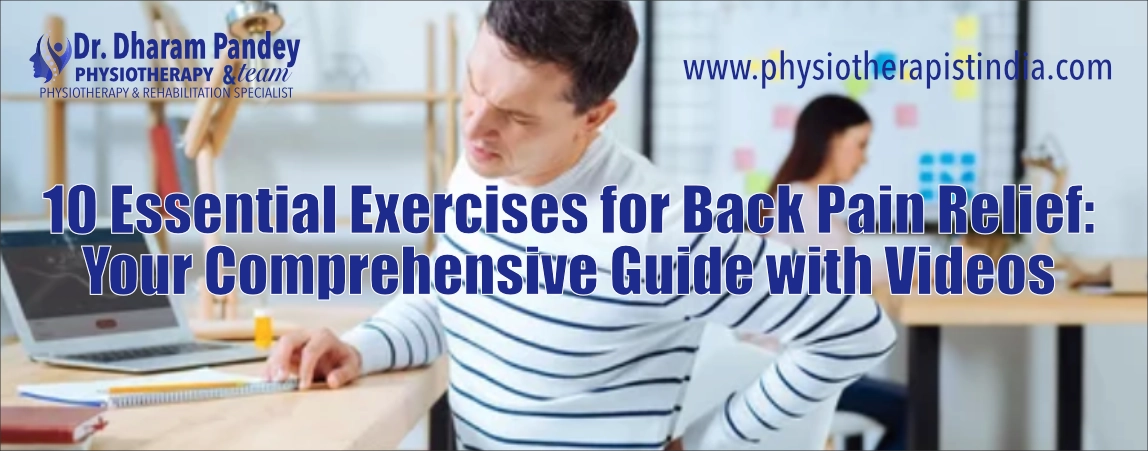WHAT WE TREAT
Vertigo and Dizziness Rehabilitation
Best Physiotherapist in Delhi
Vertigo and dizziness can be debilitating, affecting balance and quality of life. Discover the causes, symptoms, diagnosis, and treatment options for vertigo and dizziness. Explore how physiotherapy plays a crucial role in rehabilitating these conditions, helping individuals regain their equilibrium and reduce the impact on daily life.
Vertigo and Dizziness
Rehabilitation, Causes, Treatment, and the Role of Physiotherapy
Vertigo and dizziness are common and often unsettling conditions that can have a profound impact on an individual’s daily life. These sensations can be distressing and disruptive, affecting balance, mobility, and overall well-being. In this comprehensive guide, we will delve into the causes, symptoms, diagnosis, and various treatment options for vertigo and dizziness, with a special emphasis on the significant role of physiotherapy in rehabilitating these conditions. Additionally, we will address frequently asked questions to provide a deeper understanding of vertigo and dizziness.
Understanding Vertigo and Dizziness:
- Vertigo: Vertigo is a specific type of dizziness characterized by the feeling of spinning or motion, even when the person is still. It is often caused by issues with the inner ear or the vestibular system, which controls balance.
- Dizziness: Dizziness is a broad term that encompasses various sensations, including lightheadedness, unsteadiness, and the feeling of floating or being about to faint. Dizziness can result from a wide range of causes, including issues with blood pressure, circulation, or neurological problems.

Causes of Vertigo and Dizziness:
Vertigo and dizziness can have various underlying causes, such as:
- Benign Paroxysmal Positional Vertigo (BPPV): BPPV is one of the most common causes of vertigo and is often related to the displacement of small calcium particles in the inner ear.
- Meniere’s Disease: This inner ear disorder can lead to episodes of vertigo, along with hearing loss and ringing in the ears (tinnitus).
- Vestibular Neuritis: Inflammation of the vestibular nerve can cause severe dizziness and unsteadiness.
- Migraines: Some people experience vertigo or dizziness as part of their migraine symptoms.
- Orthostatic Hypotension: A sudden drop in blood pressure upon standing can result in lightheadedness and dizziness.
- Anxiety and Stress: Emotional factors can lead to dizziness and unsteadiness.
- Inner Ear Infections: Infections or inflammation of the inner ear can disrupt balance.
Symptoms of Vertigo and Dizziness:
The symptoms of vertigo and dizziness can vary depending on the underlying cause but may include:
- Spinning Sensation: In the case of vertigo, individuals often experience a spinning or rotating sensation.
- Lightheadedness: A feeling of faintness or near-fainting may occur with dizziness.
- Unsteadiness: Individuals may feel off-balance and have difficulty walking or standing.
- Nausea: Nausea and vomiting can accompany vertigo or severe dizziness.
- Hearing Issues: Hearing loss, ringing in the ears (tinnitus), or aural fullness may occur with certain causes of vertigo.
- Anxiety: The distress caused by these symptoms can lead to increased anxiety and stress.
Diagnosis of Vertigo and Dizziness:
Diagnosing the underlying cause of vertigo and dizziness typically involves a thorough evaluation, including:
- Medical History: A detailed history helps healthcare providers understand the type and potential triggers of the symptoms.
- Physical Examination: A physical exam assesses blood pressure, heart rate, neurological function, and ear-related symptoms.
- Vestibular Testing: Specific tests, such as the Dix-Hallpike maneuver, evaluate eye movement and nystagmus (involuntary eye movement) to diagnose BPPV.
- Hearing Tests: Audiometry may be used to assess hearing loss associated with some forms of vertigo.
- Imaging: MRI or CT scans may be ordered to rule out structural issues in the brain or ear.
Treatment Options for Vertigo and Dizziness:
Treatment for vertigo and dizziness depends on the underlying cause and may include:
- Medication: Medications may be prescribed to manage symptoms or treat the underlying condition.
- Vestibular Rehabilitation: Vestibular rehabilitation is a specialized form of physiotherapy that aims to improve balance and reduce dizziness through exercises and techniques.
- Epley Maneuver: This is a specific maneuver used to treat BPPV by repositioning the displaced calcium particles in the inner ear.
- Lifestyle Modifications: Reducing salt intake, staying hydrated, and avoiding caffeine and alcohol may help manage certain forms of dizziness.
- Stress and Anxiety Management: Techniques to reduce stress and anxiety can be beneficial for individuals whose symptoms are triggered or exacerbated by emotional factors.
Physiotherapy for Vertigo and Dizziness:
Physiotherapy, particularly vestibular rehabilitation, is a fundamental component of treating vertigo and dizziness. Here’s how physiotherapy contributes to the rehabilitation process:
The Role of Physiotherapy in Vertigo and Dizziness Rehabilitation:
- Assessment: A physiotherapist conducts a comprehensive assessment to identify the underlying causes and factors contributing to vertigo and dizziness.
- Individualized Treatment Plan: Based on the assessment, the physiotherapist creates a customized treatment plan tailored to the patient’s specific needs and goals.
- Vestibular Exercises: Vestibular rehabilitation exercises are designed to improve balance, coordination, and reduce dizziness. These exercises help the brain adapt to changes in the vestibular system.
- Gaze Stabilization Exercises: These exercises help individuals maintain visual focus during head movements, reducing the sensation of dizziness.
- Balance Training: Balance training exercises focus on improving stability and reducing unsteadiness, enhancing the patient’s confidence in daily activities.
- Habituation Exercises: Habituation exercises expose the patient to specific movements or positions that trigger dizziness, helping them become less sensitive over time.
- Canalith repositioning manoeuvres: These are specific movements that are used to reposition the calcium crystals in the inner ear that may be causing vertigo.
- Progress Tracking: Physiotherapists closely monitor the patient’s progress and adjust the treatment plan as needed to ensure optimal recovery.
Physiotherapy for vertigo and dizziness is a non-invasive and highly effective approach, offering individuals the opportunity to regain their equilibrium and reduce the impact of these conditions on daily life. Vestibular rehabilitation can significantly improve balance, reduce dizziness, and help individuals regain their quality of life.


Cutting-Edge Technology
Our commitment to using the best technology extends to various aspects of physiotherapy:
- Robotic Assistance: We employ robotics for gait training, aiding patients with mobility impairments. These devices facilitate improved motor control and muscle activation.
- Electrotherapy: Techniques like TENS, IFT, and Ultrasound Therapy are used to target pain relief and accelerate tissue healing.
- Virtual Reality (VR): We utilize VR and interactive gaming for engaging and enjoyable rehabilitation, increasing patient motivation and compliance with treatment.
Frequently Asked Questions
Reach out to us if you have further Questions - We're here to help!
Q1: Can vertigo and dizziness be completely cured with physiotherapy?
A1: The effectiveness of physiotherapy for vertigo and dizziness depends on the underlying cause and the individual’s response to treatment. Many individuals experience significant improvement and, in some cases, complete resolution of their symptoms with physiotherapy.
Q2: How long does it take to see results from vestibular rehabilitation for vertigo and dizziness?
A2: The time it takes to see results can vary from person to person. Some individuals may notice improvement within a few weeks, while others may require several months of consistent vestibular rehabilitation to achieve optimal results.
Q3: Can vertigo and dizziness return after successful treatment?
A3: In some cases, vertigo and dizziness may recur, especially if the underlying condition is chronic or progressive. Continuous self-management and maintenance exercises may be necessary to prevent recurrence.
Q4: Are vertigo and dizziness more common in older individuals?
A4: While vertigo and dizziness can affect people of all ages, they do become more common as individuals age. Certain vestibular and circulatory issues that contribute to these conditions may become more prevalent with age.
Q5: Can stress and anxiety trigger or worsen vertigo and dizziness?
A5: Yes, stress and anxiety can exacerbate the symptoms of vertigo and dizziness in some individuals. Managing stress and anxiety through relaxation techniques and therapy can be beneficial.
Vertigo and dizziness are conditions that can be debilitating, affecting balance, mobility, and quality of life. Understanding the causes, symptoms, and treatment options for these conditions is essential for effective management. Physiotherapy, particularly vestibular rehabilitation, plays a crucial role in rehabilitating vertigo and dizziness, offering individuals the opportunity to regain their equilibrium and reduce the impact on their daily life. With a comprehensive and personalized approach, individuals can work towards overcoming these conditions and improving their overall quality of life. Early diagnosis and a comprehensive treatment plan that includes physiotherapy can empower individuals to take control of their vertigo and dizziness and regain their confidence and well-being.
Have Questions or Need Assistance?
Don’t hesitate to reach out to us:
Book Appointment with Experts
- Call/WhatsApp: +9818911195
- Book Appointment with Experts
We are here to lend our support on your journey toward improved movement and overall well-being.
See all Blogs & Articles
See all Conditions we Treat
Note: Content provided here is for informational purposes only and is not a substitute for professional medical advice or diagnosis. If you believe you are experiencing pain or any other health-related issue, it is important to seek the advice of qualified healthcare professionals for a proper evaluation and treatment plan.
See all How it Works.









